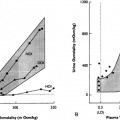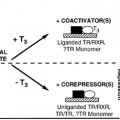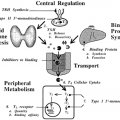GONADOTROPIN HYPERSECRETION
GONADOTROPIN-SECRETING ADENOMAS
The standard therapy for gonadotropin-secreting adenomas is surgical resection, often followed by radiation therapy. However, this approach is rarely curative. Marked reductions (but not normalization) of follicle-stimulating hormone and α-subunit secretion have been seen in patients receiving bromocriptine after unsuccessful surgical therapy or as primary therapy.53 Octreotide therapy has reduced α-subunit secretion and produced tumor shrinkage in a few patients.54 Medical therapy should be considered only for those patients who refuse surgical and radiation therapy or in whom such treatment has failed.
Partial suppression of follicle-stimulating hormone was reported in male patients receiving testosterone or human chorionic gonadotropin (which increases endogenous testosterone).53 Clomiphene citrate or estrogen failed to suppress gonadotropin secretion in these patients, and in one patient, estrogen therapy increased luteinizing hormone and α-subunit secretion.
TRUE PRECOCIOUS PUBERTY
Previously, treatment of true precocious puberty was limited to the use of medroxyprogesterone acetate or cyproterone acetate. These agents failed to arrest bone age advancement adequately and were associated with significant side effects, including adrenal suppression, hypertension, and excessive weight gain. Moreover, they led to reduced fertility and an increased incidence of reproductive tumors in some patients.
Stay updated, free articles. Join our Telegram channel

Full access? Get Clinical Tree







